

From the Spring 2017 issue of the Isa Informer
By Lorenzo Lasater, President
A dogged pursuit of economically vital traits defines the creation of the Beefmaster breed. My grandfather Tom Lasater crafted the Beefmaster breed under the guidance of his own Lasater Philosophy, or the Six Essentials, an economical roadmap for the selection of beef cattle. Although a common thread in all modern beef production today, his ideas were considered revolutionary—and some said crazy—at the time.
Today when cattle folks visit our ranch to see cattle and discuss ideas, the conversation inevitably turns to the Six Essentials and how we deploy them in daily operations. Although it is simple to profess allegiance to the concept, it is much more difficult to wield it as the powerful selection weapon it is. I thought it might be useful to outline a few of the tools Isa Beefmasters employs to weave the Six Essentials throughout our breeding program and management. While some are so obvious as to appear simplistic, others might come as a bit of a surprise.
Fertility is the cornerstone of the Six Essentials. With a fertile herd, all the other pieces of the puzzle fall into place. So how do you build fertility into your cowherd? The first piece is so simple many fail to see it—a defined breeding season. If cattle are expected to raise a calf every year (meaning optimum and maximum production), they must have a breeding season of 90 days or fewer. Gestation length in cattle is 280 days, or nine months. This leaves only 90 days for involution (recovery) and rebreeding. In a breeding season longer than 90 days, a percentage of the females cannot calve annually.
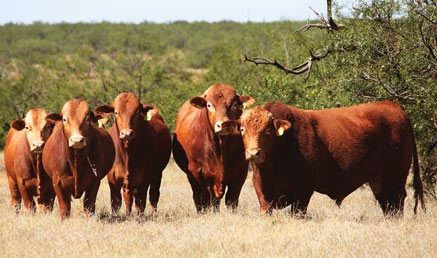
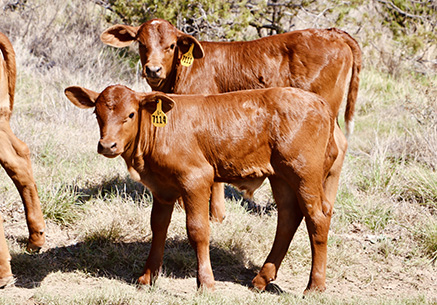
For an added twist in the selection of individuals, we emphasize choosing sons and daughters of first-calf heifers. These cattle exemplify early maturity and calving ease, which amplifies the progress of fertility within the herd.
A final consideration regarding fertility—and one that makes Beefmasters completely unique among beef breeds—is population genetics. We breed our cattle in multiple-sire herds, meaning our bulls must compete to breed, just like they will in our customers’ commercial beef operations. We began using DNA for sire identification more than 20 years ago, when it first became commercially available. This information gives us the incredible luxury of employing population genetics and still knowing who the sires are. There is a tremendous variation in libido and breeding effectiveness among bulls. We want to identify those dominant breeders and propagate their fertile genetics.
Weight seems obvious: Cow-calf operations sell pounds of beef, so more is always better, right? Actually, no! Weight is a delicate balance, and we strive to produce optimum—rather than maximum—weights in cattle.
Extremely growthy cattle, Beefmasters easily move the needle for weight, which is a highly heritable genetic trait. We measure and select for weight in many ways: We take weaning and yearling weights and track the corresponding EPDs for both. In the Isa Beefmasters Bull Performance Test, we put all our developing bulls through both grass and feed gain tests. If we select the heaviest and highest gaining bulls in both those phases, what will happen over generations of cattle? They get bigger!
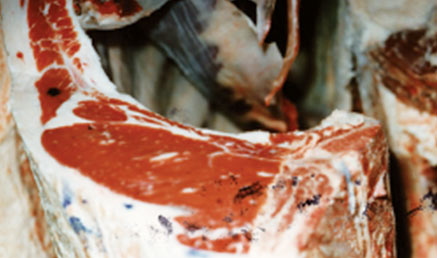
Large females require more maintenance and have difficulty rebreeding under tough conditions. We ranch in low-rainfall, semi-desert country, where conditions frequently are tough. So I constantly strive to balance optimum weight with performance, while trying to moderate extreme growth by selecting for type rather than pure weight. Tom Lasater called this selection for type conformation, the next of our Six Essentials.
Simply put, conformation refers to the visual appraisal of a live animal with regard to carcass merit and production efficiency. We critically examine animals for thickness and muscling, structural correctness, appropriate size and masculinity or femininity. Also especially important is freedom from structural or genetic cosmetic defects, for example a crooked nose, post legs, poorly formed testicles, long sheath, weak back, etc. Fleshing ability also falls under conformation. We deem a cow lacking if she is in poor condition relative to her peers.

We select for milk production in a couple of basic ways. It is important to note that, once again, we strive for optimum production. Too little milk and calf weight and quality suffer; too much milk and the energy required to produce the excess is stolen from other areas, such as the cow’s own body condition or reproduction.
The first and most obvious way of measuring milk production is examining weaning weight. If you are trying to reduce cow size, you can dig a little deeper by figuring what percent of a cow’s body weight her calf represents at weaning. A cow weighing 1000 pounds and weaning a 600-pound calf is much more efficient than a 1500-pound cow weaning the same calf. Milk EPDs also reflect her genetic ability to produce milk.
Another simple tool for managing milk production in the pasture is to identify and eliminate any cow that raises a poor-quality calf, an indicator of low milk and/or poor mothering ability. It goes without saying we must eliminate any dry cows and those that orphan their calves.
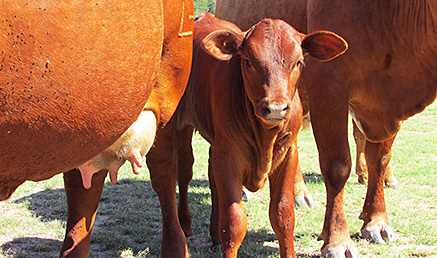
Hardiness refers to the animal’s ability to thrive in difficult conditions with low maintenance costs. Beefmasters absolutely dominate other cattle breeds in hardiness, which is one of the reasons for their popularity in many cattle regions world-wide characterized by harsh climates (desert, tropical, hot, humid) and low infrastructure. If you can’t easily buy cow feed, you need cows that can survive without!
Disease and insect resistance also fall under the hardiness umbrella. Beefmasters enjoy an innate “wellness” that stems from many generations of not being pampered. Tom Lasater quit using insecticides decades ago, with the theory that some cattle are more naturally resistant to parasites than others. He believed that cattle with lower resistance would fail to rebreed and, thus, remove themselves from the herd. Over many generations, this self-sufficiency will impact the herd’s genetic resistance to disease and insects significantly.
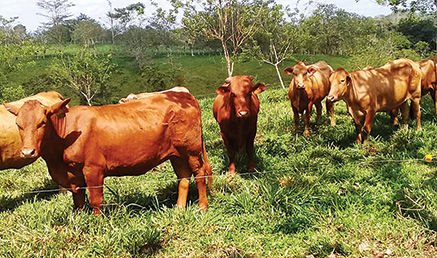
So how do we select for hardiness? Already we have discussed eliminating poor doers, such as thin cows or orphan calves and their mothers. Management also plays an important role. We all enjoy being good to our cattle, but we also must be mindful of the economics of pampering cattle, which has both a financial and genetic cost. If you pamper cattle too much, you allow less desirable individuals to remain in the herd and therefore lose genetic traction. Forcing cattle to succeed regardless of their conditions improves the ingrained hardiness of your herd most rapidly, allowing you to see which ones rise to meet the challenge and which ones fail.
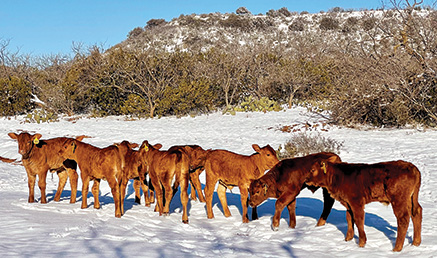
Gentle cattle handle better, breed better, feed better, slaughter better and generally are nicer to spend time with than wild, nervous or ill-tempered cattle. We select for disposition by teaching cattle good manners when handling them and also by not tolerating bad behavior. We have all seen the wild cow teaching her young calf to act the same way. Part nature and part nurture, that behavior does not belong in our herd. You’ll find that if you eliminate the worst offenders, the rest of the cattle quickly settle down.
One other concept I’ll discuss under disposition is intelligence. I truly believe, and have seen it verified many times by others, that Beefmasters are smarter than other breeds. They are calm, responsive and almost eager to please. We have all had the experience of trying to put a herd of cattle through a gate. It always takes a calm and reasonable lead cow to start the flow in the way we are asking. We hope to propagate those pleasant, intelligent dispositions in our cattle.
A simple and effective roadmap, the Six Essentials guides us to economical cattle breeding and management. Incredibly, these tools are not limited to Beefmasters but can be applied to other types of cattle, or even other types of livestock. Success with the Six Essentials simply requires a willingness to work with nature to hold cattle accountable. Reaping both financial and genetic rewards more than justifies the extra effort.
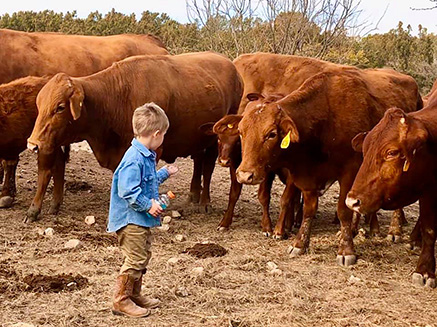
© ISA BEEFMASTERS 1996-2023 ALL RIGHTS RESERVED.